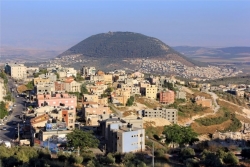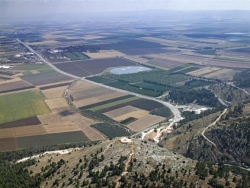ðÈöÀøÇú
Updated: 2013.09.23
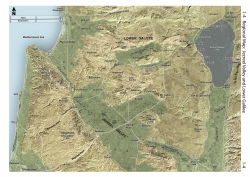 |
Nâ•tzᵊr•atꞋ; Hellenized (i.e. Christianized) in LXX to Ναζαρεθ.
ðÈöÀøÇú, deriving from the verb ðÈöÇø, is the combinative form of an unused noun, ðÈöÀøÈä, which would mean "a protective sentry guard" – a cognate of ðÅöÆø. Thus, …-ðÈöÀøÇú means "a protective sentry guard of…"
Much has been overlooked about ðÈöÀøÇú because the only ones with the necessary security perspective are Israeli Jews, the essentials never occurred to
Topographical Bottleneck
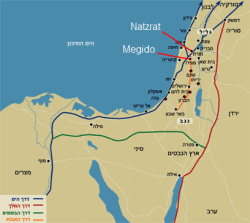 |
Opposite ðÈöÀøÇú, to the south across òÅîÆ÷ éÄæÀøÀòÆàì, is the water-supplied spear-point of defense forces repelling invaders coming from the north via ãÆøÆê äÇéÌÈí, or via any major trade route or valley corridor in the area, controlling the corridor through which invaders from Lebanon or Syria would have to pass into
Being nestled in a hollow on the north side of òÅîÆ÷ éÄæÀøÀòÆàì, surrounded by observation peaks affording commanding views in all directions, ðÈöÀøÇú was a forward observation post "frontier town."
Forward Observation Panorama
| ||||
| ||||
|
ðÈöÀøÇú is situated on the southeast slope of a basin, surrounded by protective limestone hills. A rocky gorge, between two craggy hills on the south, gradually descends from the elevated plateau, 460 m. (1500 ft.) above sea level, opening out into òÅîÆ÷ éÄæÀøÀòÆàì, 305 m. (1000 ft.) below.
Directly across òÅîÆ÷ éÄæÀøÀòÆàì from äÇø îÀâÄãÌåÉ, the forward sentry village of ðÈöÀøÇú served as a literal ðÈöÀøÇú äÇãÆøÆê. When ðÈöÀøÇú sentries spotted invaders coming from the north, a signal fire (and resisting force) would provide several hours warning to äÇø îÀâÄãÌåÉ, immediately across the plain, to muster troops and prepare for battle before invaders could reach äÇø îÀâÄãÌåÉ; even longer before invading troops could populate an effective battle formation to attack äÇø îÀâÄãÌåÉ.
Summiting the hill 150 m. (500 ft.) above the town offers a commanding panorama – "You can see thirty miles in three directions" (Smith, Hist. Geog., p. 432). From these surrounding summits, sentries can monitor all of the invasion routes coming from the north. One could see the plateaus of
To the west, on a crisp-cool, clear (mid-spring or mid-autumn) day, one can see the coast of Tyre, the blue waters of
To the east, across Yâm
To the south one could see äÇø îÀâÄãÌåÉ and the whole of òÅîÆ÷ éÄæÀøÀòÆàì, which was the scene of many of the most memorable battles of
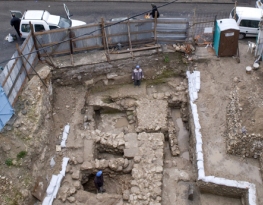 |
1st Century C.E. ðÈöÀøÇú House |
The town folk of ðÈöÀøÇú were widely disrespected as uncultured. All indications are that this small (population perhaps 200), forward-observation village was a typical frontier town; Aramaic-speaking like many of the Syrians, right next-door to the Roman goy•im′ city of Sepphoris, and far from the Israeli Hebrew cultural center of Yәrushâ•la′yim – an enigmatic hometown for a world-class graduate of the then-leading university in the world (the Great Library Complex Alexandria, Egypt).
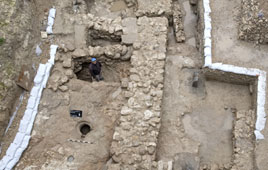 |
Archeologists have excavated one house from the early 1st century C.E. village of ðÈöÀøÇú from the time when
Google+ registered author & publisher
Google+

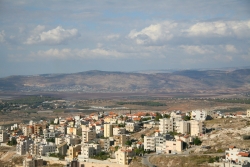
 250x188.jpg)
